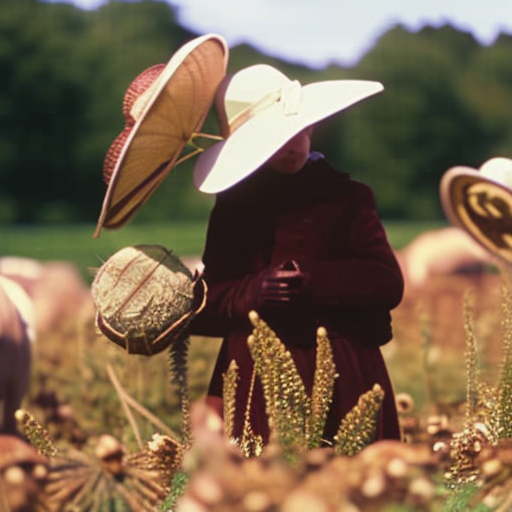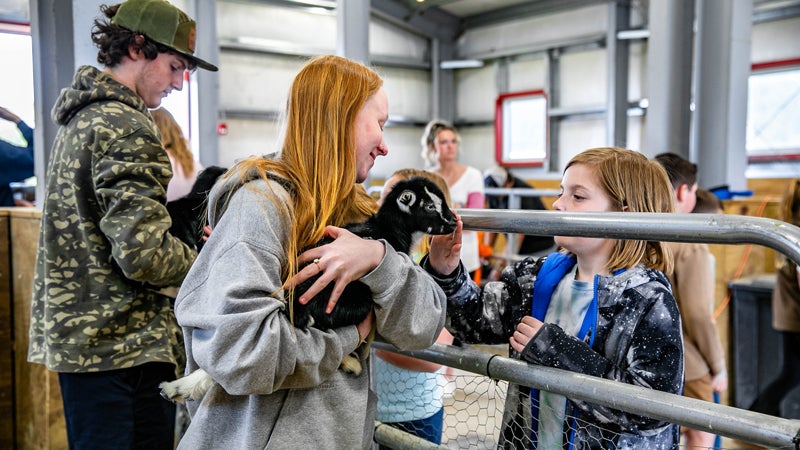IWCS celebrates Agriculture Literacy Week – Smithfield Times
IWCS celebrates Agriculture Literacy Week - Smithfield Times Smithfield Times


IWCS celebrates Agriculture Literacy Week
Published 7:14 pm Monday, April 1, 2024

- Agriculture students Leighton Pulley and Gracie Baker show the students baby goats while Windsor Elementary student Isabelle Jones pets one of the goats. (Photo submitted by IWCS)
In celebration of Agriculture Literacy Week
Windsor Elementary students in grades K-5 were invited to the Isle of Wight County Schools’ Agricultural Land Lab for story time. High school students in the agriculture program read the Virginia Agriculture in the Classroom (VAIC) Book of the Year, “Logan’s Greenhouse,” to the Windsor Elementary classes at the student-built and maintained greenhouse. After the reading, the elementary students were taken on a tour of the Land Lab where they got to see and interact with various animals and farm life. The IWCS Agricultural Land Lab is a 30-acre working farm that provides authentic, hands-on learning experiences for students in the division’s agriculture program. The facility includes livestock, pastures, a greenhouse, vegetable garden, and a state of the art barn and classroom building. Virginia Agriculture In The Classroom is a statewide educational program providing resources, training and support to schools, educators and volunteers so that they can meaningfully connect children to agriculture. Agriculture Literacy Week was celebrated March 18-22.
SDGs, Targets, and Indicators in the Article
1. Sustainable Development Goal: Quality Education
- Target 4.4: By 2030, substantially increase the number of youth and adults who have relevant skills, including technical and vocational skills, for employment, decent jobs, and entrepreneurship.
- Indicator 4.4.1: Proportion of youth and adults with information and communications technology (ICT) skills, by type of skill.
The article mentions that high school students in the agriculture program read a book to elementary students at the student-built greenhouse. This activity promotes education and the development of relevant skills for employment and entrepreneurship.
2. Sustainable Development Goal: Zero Hunger
- Target 2.4: By 2030, ensure sustainable food production systems and implement resilient agricultural practices that increase productivity and production, that help maintain ecosystems, that strengthen capacity for adaptation to climate change, extreme weather, drought, flooding, and other disasters, and that progressively improve land and soil quality.
- Indicator 2.4.1: Proportion of agricultural area under productive and sustainable agriculture.
The article mentions that the IWCS Agricultural Land Lab is a working farm that provides authentic, hands-on learning experiences for students. This promotes sustainable food production systems and resilient agricultural practices.
3. Sustainable Development Goal: Life on Land
- Target 15.1: By 2020, ensure the conservation, restoration, and sustainable use of terrestrial and inland freshwater ecosystems and their services, in particular forests, wetlands, mountains, and drylands, in line with obligations under international agreements.
- Indicator 15.1.1: Forest area as a proportion of total land area.
The article mentions that the IWCS Agricultural Land Lab includes pastures and a greenhouse. While it doesn’t specifically mention forests or wetlands, the presence of these natural elements on the farm contributes to the conservation and sustainable use of terrestrial ecosystems.
Table: SDGs, Targets, and Indicators
| SDGs | Targets | Indicators |
|---|---|---|
| Quality Education | Target 4.4: By 2030, substantially increase the number of youth and adults who have relevant skills, including technical and vocational skills, for employment, decent jobs, and entrepreneurship. | Indicator 4.4.1: Proportion of youth and adults with information and communications technology (ICT) skills, by type of skill. |
| Zero Hunger | Target 2.4: By 2030, ensure sustainable food production systems and implement resilient agricultural practices that increase productivity and production, that help maintain ecosystems, that strengthen capacity for adaptation to climate change, extreme weather, drought, flooding, and other disasters, and that progressively improve land and soil quality. | Indicator 2.4.1: Proportion of agricultural area under productive and sustainable agriculture. |
| Life on Land | Target 15.1: By 2020, ensure the conservation, restoration, and sustainable use of terrestrial and inland freshwater ecosystems and their services, in particular forests, wetlands, mountains, and drylands, in line with obligations under international agreements. | Indicator 15.1.1: Forest area as a proportion of total land area. |
Behold! This splendid article springs forth from the wellspring of knowledge, shaped by a wondrous proprietary AI technology that delved into a vast ocean of data, illuminating the path towards the Sustainable Development Goals. Remember that all rights are reserved by SDG Investors LLC, empowering us to champion progress together.
Source: smithfieldtimes.com

Join us, as fellow seekers of change, on a transformative journey at https://sdgtalks.ai/welcome, where you can become a member and actively contribute to shaping a brighter future.







